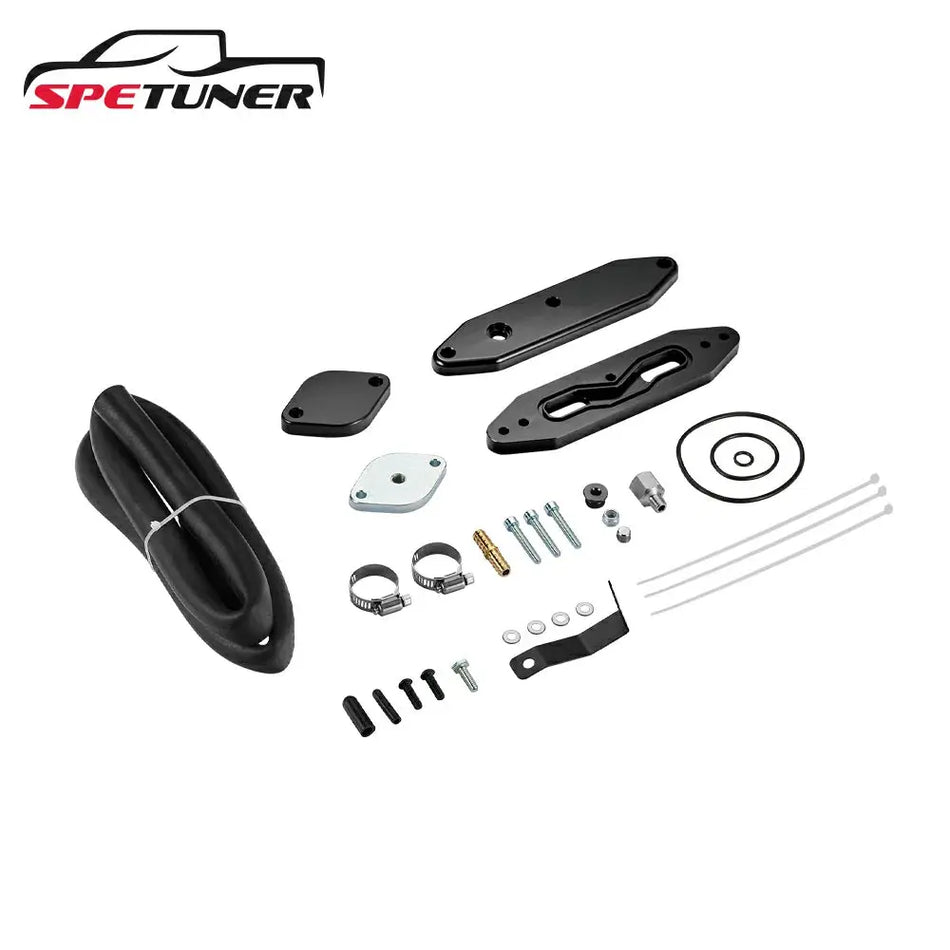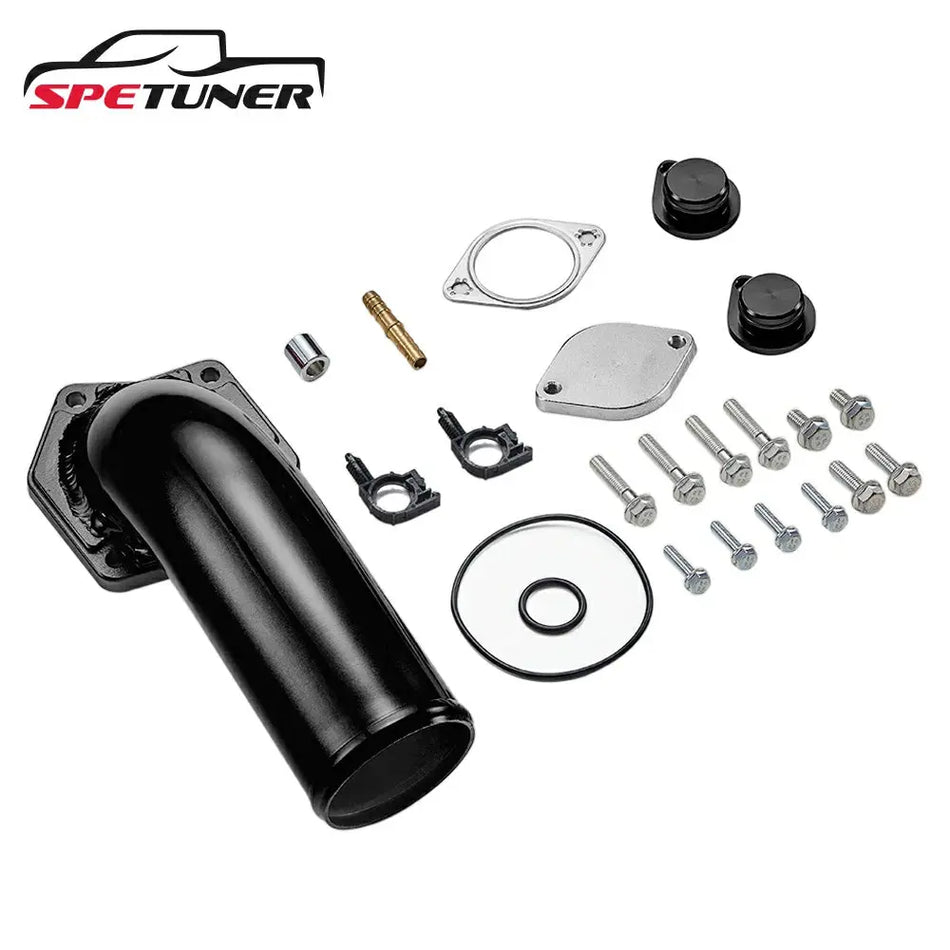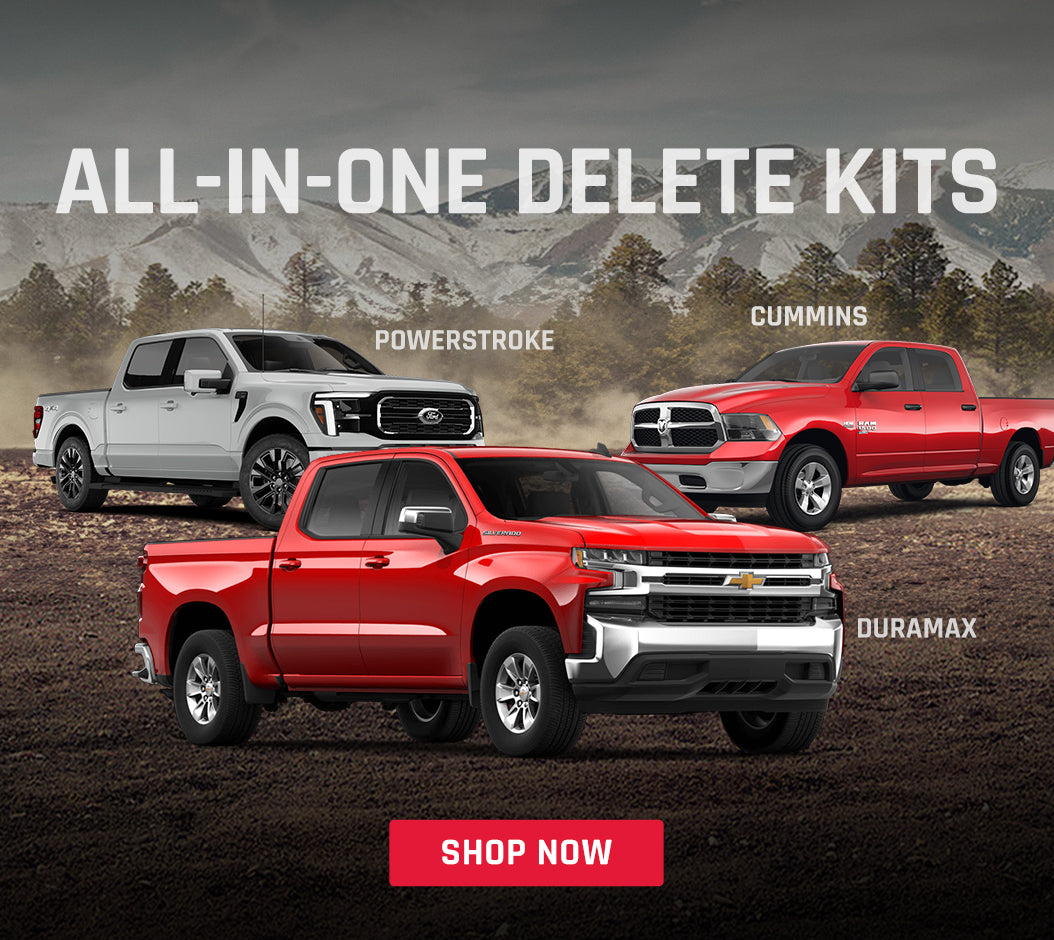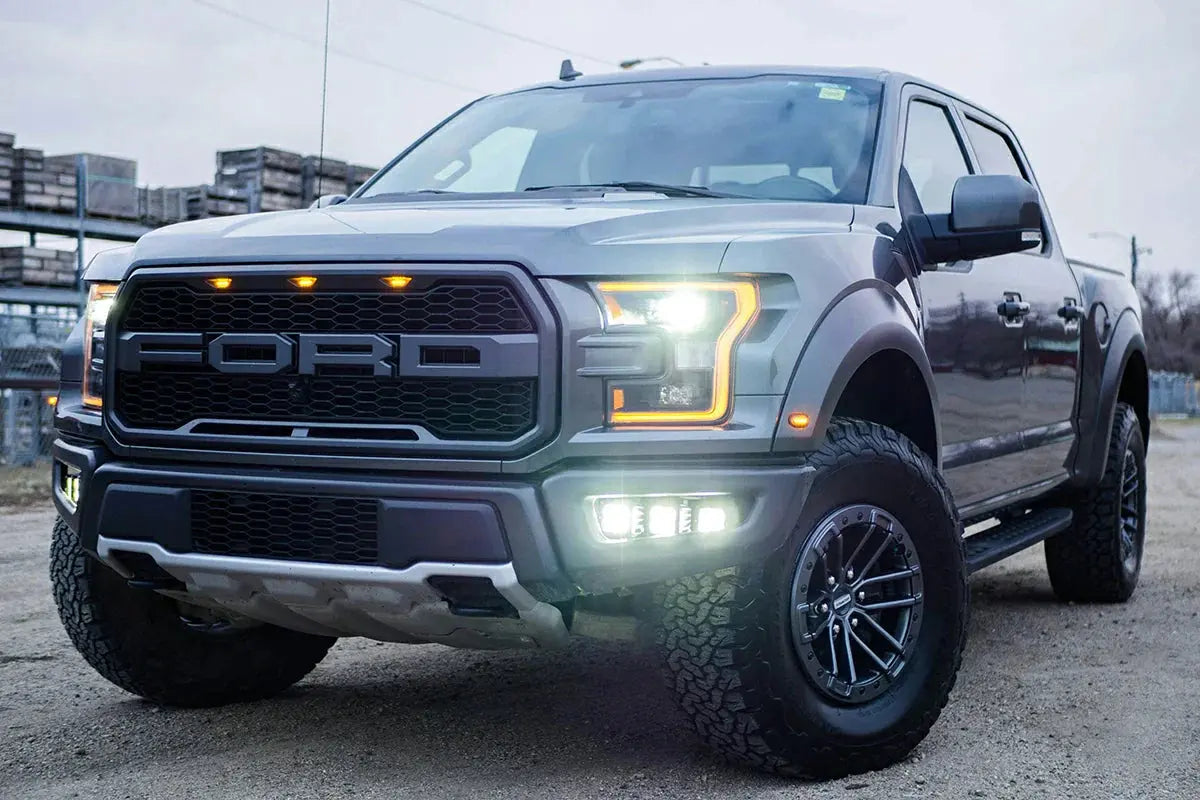Why You Should Upgrade the CCV System on Your 6.7L Powerstroke
If you’re driving a 6.7L Powerstroke, chances are you’ve heard of the CCV (Crankcase Ventilation) system—but have you ever questioned whether the stock setup is really doing the job?
The Problem With Stock CCV Systems
The factory designs, especially the early models, leave a lot to be desired.
-
The 2011–2016 OEM CCV showed dangerously high crankcase pressures—over 40 inches of water at wide-open throttle. That level of pressure stresses your engine's seals and promotes oil leaks.
-
Even the 2017–2022 version, though improved, still registered around 10.5 in H₂O, which is considerably high under load.
-
These systems often use non-serviceable internal filters that can clog over time, gradually increasing restriction and pressure in the crankcase.
And that pressure? It doesn’t just stay in the crankcase—it finds the weakest link in your system. That means potential seal failures, oil leaks, or worse, compromised turbo performance.
Why High Crankcase Pressure Is a Serious Issue
Let’s break it down: your diesel engine produces blow-by gases—unburnt fuel, combustion gases, and vaporized oil—that need to be vented safely.
When your CCV system can't efficiently remove those gases, crankcase pressure builds up. That can lead to:
-
Increased oil consumption
-
Premature gasket or seal failure
-
Oil mist reaching the intake, contributing to carbon buildup in the turbo and intake valves
And here's the kicker—none of these signs are obvious until damage is already done.
The Legal Dilemma: Performance vs Emissions Compliance
Factory CCV systems typically route gases back into the intake to burn them, which is EPA-compliant.
However, this also means oil mist is reintroduced into your engine—a compromise between cleanliness and compliance. Many aftermarket users switch to atmospheric venting setups to escape this problem, but that raises legal and environmental concerns.
If you want lower pressure, cleaner operation, and better serviceability, upgrading your CCV system isn't optional; it's essential.

Pressure Test Results: Which CCV System Actually Performs Best?
At SPETUNER, we ran real-world pressure tests using a 2012 6.7L Powerstroke with over 210,000 miles. The goal was simple: measure crankcase pressure at hot idle and full throttle (55–70 mph), then compare across stock and upgraded CCV systems.
We used a precision digital manometer to measure crankcase pressure in inches of water column (in H₂O). Lower numbers = better pressure control and gas evacuation.
Crankcase Pressure Test Results
| CCV System | Idle Pressure | WOT Pressure | Summary |
|---|---|---|---|
| OEM 2011–2016 | 1.1 in H₂O | 40+ in H₂O | Critical overpressure |
| OEM 2017–2022 | 1.2 in H₂O | 10.5 in H₂O | Moderate, still restrictive |
| OEM 2023+ | 2.6 in H₂O | 3.2 in H₂O | Best-performing stock option |
| SPETUNER Internal Catch Can | ~0 in H₂O | 4.2 in H₂O | Zero-restriction performance |
| SPETUNER Recirculating CCV | 4.7 in H₂O | 5.0 in H₂O | Balanced and legal |
What Do These Numbers Tell Us?
-
The first-gen OEM system is clearly the worst offender. At full load, it generated ten times more crankcase pressure than the 2023+ Ford version or our SPETUNER kits.
-
The 2023+ OEM performed well, largely due to the vacuum draw from the intake side of the turbo. Still, it's not user-serviceable and prone to wear.
-
SPETUNER’s Internal Catch Can achieved nearly zero pressure thanks to its open-venting design—ideal for race/off-road builds.
-
SPETUNER’s Recirculating CCV kept pressure nearly as low while remaining fully emissions-compliant.
In short, upgrading your CCV system dramatically reduces pressure, easing stress on engine components and extending system life.
Why These Numbers Matter: Understanding the Engineering Behind CCV Systems
It’s one thing to compare numbers, but to make the right choice, you need to understand why those differences exist. Here’s a look under the hood of each design and how it impacts crankcase pressure and oil mist control.
The Role of Flow Resistance
Crankcase pressure builds when gases can’t escape fast enough.
-
Early OEM systems use small internal passages, fixed baffles, or restricted filter elements that choke flow as they age.
-
The SPETUNER Internal Catch Can has no internal filter or complex flow path—gases exit freely, which is why pressure is nearly zero.
-
The SPETUNER Recirculating CCV uses a stainless steel mesh filter that balances restriction and oil separation. It’s serviceable, so it won’t clog up over time like OEM filters.
Lower pressure doesn’t just protect your engine—it also improves overall system efficiency.
Why CDR Valves Matter
Modern OEM units (like the 2023+ version) include a Crankcase Depression Regulator (CDR) valve, which acts like a vacuum limiter.
-
Under full throttle, your turbo creates strong suction upstream of the intake.
-
This vacuum helps pull crankcase gases out, reducing internal pressure.
-
The CDR ensures that this vacuum doesn’t become too strong, which could cause oil seals to suck in or deform.
SPETUNER’s recirculating system works harmoniously with this principle by routing gases back to the intake, letting your engine help evacuate itself.
The Hidden Risk: Clogged Filters
One thing users often overlook is what happens if the filter gets clogged.
-
OEM systems with sealed, non-serviceable filters can slowly restrict over time—pressure rises, and you won’t know until damage occurs.
-
SPETUNER’s recirculating design is fully serviceable. You can inspect and clean the filter with every oil change.
-
Better yet, if you forget? The 2023+ Ford unit has a bypass path that allows gases to flow even if the filter is blocked. SPETUNER’s internal catch can also never clogs—because it has no filter to begin with.
Understanding these airflow dynamics is critical if you’re serious about engine longevity and consistent performance.

SPETUNER CCV Kits: Which One is Right for Your 6.7L Powerstroke?
We’ve conducted the testing and broken down the airflow science—now it’s time to choose the solution that fits your truck and your priorities. SPETUNER offers two purpose-built CCV kits, each engineered for different needs.
SPETUNER Standard CCV Kit – Internal Catch Can (Vented to Atmosphere)
This setup is all about maximum flow and zero maintenance.
-
No internal filters to clog or clean.
-
Minimal resistance = ultra-low crankcase pressure.
-
Uses high-temp silicone hose with a simple vent-to-atmosphere exit.
Perfect for performance builds, off-road rigs, or anyone who just wants the most pressure relief possible.
Pros:
-
Simplest system to install and run.
-
Never needs cleaning.
-
Keeps crankcase pressure near zero at all times.
Cons:
-
Emits oil mist (visible “smoke”) under load.
-
Not emissions-compliant for street-driven trucks.
If you don’t mind a little crankcase odor and want dead-simple performance, this is it.
SPETUNER Upgraded CCV Kit – Recirculating System with Serviceable Catch Can
Need to stay emissions-legal? This kit gives you strong performance and compliance.
-
Stainless steel mesh filter traps oil mist.
-
Crankcase gases are routed back to the intake—no external smell or mess.
-
The filter is fully serviceable—just remove one bolt and rinse during oil changes.
Pros:
-
Street-legal solution with clean operation.
-
Maintains pressure under 5 in H₂O, better than most OEM systems.
-
Modular and easy to inspect or service.
Cons:
-
Requires light maintenance (filter inspection every 1–2 oil changes).
-
Slightly more complex installation compared to vented setups.
This is the smart pick if you're building a clean, daily-driven Powerstroke and still want top-tier crankcase pressure control.
Engineering Details That Set SPETUNER Apart
When it comes to aftermarket diesel parts, it’s not just about what works—it’s about how well it's built. Every component in SPETUNER’s CCV kits is designed with durability, ease of use, and long-term reliability in mind.
High-Quality Materials & Machining
-
All billet aluminum components are CNC-machined in-house, ensuring tight tolerances and a perfect seal.
-
Our silicone hoses are rated for high temperatures and oil exposure, built to withstand the harshest engine bays.
This isn't throwaway hardware—it's made to match the engine it supports.
Secure, Reliable Hose Connections
Forget zip ties or cheap plastic clips.
-
SPETUNER kits use one-ear stainless hose clamps sourced from McMaster-Carr for a secure, vibration-resistant fit.
-
Hoses can be preassembled outside the truck for quick, clean installation.
-
Unlike the OEM plastic tabs that weaken after a couple of removals, our fittings are made to be removed and reinstalled as many times as needed.
User-Friendly Design
Every part of the system is built with the installer and long-term owner in mind:
-
Simple serviceability (one-bolt filter access on recirculating unit)
-
Modular layout that fits neatly around existing engine components
-
No special tools required—just smart engineering
When you're under the hood, you’ll appreciate these details. They're the difference between a frustrating install and a job done right the first time.

Which CCV System Should You Choose?
Both SPETUNER kits deliver excellent crankcase pressure control and durable performance, but your ideal choice depends on how you use your truck.
✅ Go With the SPETUNER Standard Kit (Internal Catch Can) If:
-
You want zero maintenance.
-
You’re building a race truck, off-road rig, or weekend warrior.
-
You don’t mind a little visible oil mist under load.
-
You want the lowest possible crankcase pressure—period.
This kit is for the power-hungry, hands-off owner who just wants the crankcase to breathe freely and never worry about it again.
✅ Choose the SPETUNER Upgraded Kit (Recirculating) If:
-
You daily drive your truck or need emissions compliance.
-
You want a clean engine bay and no crankcase odor.
-
You don’t mind checking the filter at oil change intervals.
-
You prefer a more OEM-style hose routing with a big upgrade in serviceability and performance.
This system is ideal for owners who value a clean, efficient solution that won’t violate emissions rules or require constant tweaking.
Whichever route you take, SPETUNER’s CCV kits give you measurable pressure relief, quality construction, and flexibility that OEM parts just can’t match.
Ready to upgrade your crankcase system?
→ Explore the Standard Kit
→ Check Out the Upgraded Recirculating Kit
Frequently Asked Questions about 6.7L Powerstroke CCV Upgrades
How often should I change the CCV filter on a 6.7 Powerstroke?
OEM CCV filters are typically replaced every 60,000 to 100,000 miles, depending on conditions. However, SPETUNER's upgraded kit uses a washable stainless steel filter you can inspect and clean during every oil change, eliminating the need for frequent replacements.
How do I know if my CCV filter is bad?
Symptoms of a failing CCV filter include increased crankcase pressure, oil leaks, elevated oil consumption, or visible oil mist near the vent. Monitoring crankcase pressure or inspecting the filter can help confirm the issue.
What happens if I don’t change the CCV filter?
A neglected CCV filter can become clogged, causing high crankcase pressure. This can lead to gasket failures, turbo oil seal damage, or increased blow-by—potentially resulting in costly repairs over time.
Is a CCV delete worth it on a 6.7 Powerstroke?
Yes—especially if you want to lower crankcase pressure and eliminate oil mist from recirculating into the intake. SPETUNER's CCV delete kits offer both atmospheric and legal recirculating options, giving you full control over performance and compliance.
What are the signs of a clogged CCV filter or crankcase breather?
Common signs include increased crankcase pressure, oil around valve covers, oil cap blow-off, or smoke from the CCV hose. Severe cases may trigger turbo seal failure or dipstick blowout.
Why should I delete the CCV system on my Powerstroke?
Deleting the CCV system can reduce crankcase pressure, lower oil contamination, and prevent oil mist from entering the intake. This is particularly beneficial in performance or off-road applications.
Can a clogged CCV system cause engine damage?
Absolutely. Excessive pressure from a clogged CCV system can force oil past gaskets and seals, causing leaks, performance issues, and in severe cases, internal damage to engine components.
Does a recirculating CCV system affect emissions?
Recirculating systems like SPETUNER’s upgraded kit maintain emissions compliance by routing gases back to the intake. This helps keep your truck street legal while still controlling oil mist and pressure.
How do I maintain a recirculating CCV system?
Simply remove the filter element every oil change and inspect it for buildup. If it looks dirty, rinse it with solvent or warm soapy water and reinstall. SPETUNER’s one-bolt access makes this process fast and easy.
What’s the difference between vent-to-atmosphere and recirculating CCV setups?
Vent-to-atmosphere systems release crankcase gases outside the truck—offering minimal pressure but visible smoke and odor. Recirculating setups route gases back into the intake, keeping emissions compliant and the engine bay cleaner.










